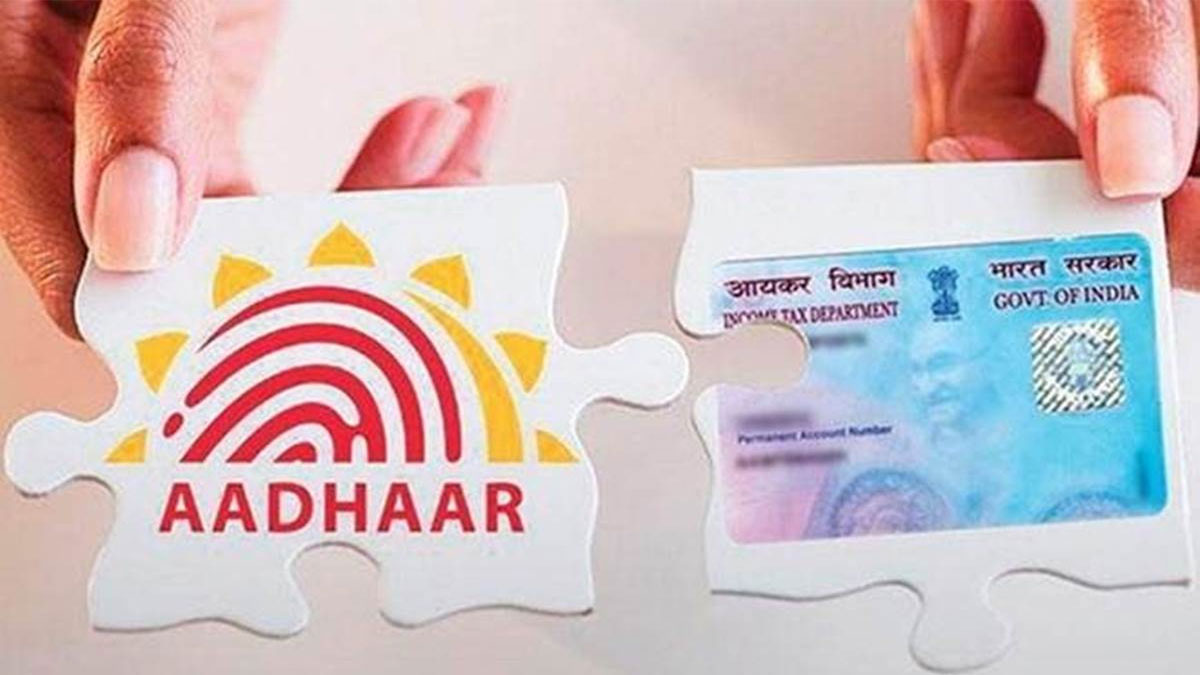The Central Board of Direct Taxes or CBDT had allowed taxpayers time until 30th June 2023 to link their Permanent Account Number (PAN) with their Aadhaar number. Even after the due date, complying with this mandate remains important since non-compliance can have severe consequences. This article offers a comprehensive guide on the importance of linking your PAN and Aadhaar, highlighting the main consequences of non-compliance.
Importance of linking PAN and Aadhaar
Linking of PAN and Aadhaar is mandatory for all individuals who have been issued PAN on or before 1st July 2017. Completing this linkage at the earliest is important due to the following reasons:
- Compliance: Linking PAN and Aadhaar is mandatory under Section 139AA of the Income Tax Act. Failing to do so will attract penalties and result in your PAN becoming inoperative.
- Prevent tax evasion: Completing the PAN-Aadhaar linkage also helps the government curb black money circulation and tax evasion. This system ensures that each PAN is linked to a unique Aadhaar number, eliminating the possibility of individuals holding multiple PANs to evade taxes.
- Facilitate e-filing of ITR: To e-file your taxes on the Income Tax Department’s website, you need to link your PAN and Aadhaar. ITR verification is done through the Aadhaar verification mode which may be impossible if your PAN is not linked to your Aadhaar.
- Availing government subsidies: Linking your PAN and Aadhaar is required to claim benefits from various government schemes and subsidies. For instance, you need to link your PAN and Aadhaar to claim LPG subsidy benefits under the Direct Benefit Transfer scheme.
- Simplified KYC procedures: Establishing a PAN-Aadhaar link also simplifies KYC proceedings for various services like opening a bank account, applying for a loan, or using online marketplaces for high-value transactions.
Consequences of not linking PAN and Aadhaar
According to the CBDT directive, failing to link your PAN and Aadhaar before the deadline will make the PAN of the concerned taxpayer inoperative. This will lead to the following consequences:
- Taxpayers cannot file income tax returns with operative PAN Cards.
- The IT Department will not process pending returns or allow you to claim refunds with an operative PAN.
- According to Section 206AA, TDS applicable will be charged at a higher rate if PAN is inoperative. TCS rates will also be collected at a higher rate under Section 206CC if you make transactions without an active PAN.
- TDS/TCS credit is outlined in Form 26AS to help you offset your tax liability. However, in case of an inoperative PAN, TDS/TCS credit will not be visible on Form 26AS.
- TCS/TDS certificates will not be available for inoperative PAN Cards.
- You need to submit Form 15G/15H as self-declarations for interest on bank and NBFC FDs and other eligible investments to declare that your taxable income is below the minimum exemption threshold. Without an active PAN, you cannot submit these forms to avoid TDS deductions.
- Since PAN is also the sole identification number for transactions in the securities market, market regulator SEBI has also reinforced this directive. Failing to link your PAN and Aadhaar will also disqualify you from doing transactions in the securities market.
- An active PAN Card is required to carry out various transactions. Absence of an active PAN will disqualify you from making the following transactions:
- Open a bank account
- Get a debit or credit card issued
- Purchase mutual funds
- Open a Demat account
- Make cash deposits in a bank or post office exceeding Rs. 50,000 in a single day.
- Open a time deposit with NBFCs, banks, or other financial institutions exceeding Rs. 50,000 or aggregating to over Rs. 5 Lakhs in the financial year.
- Payment of prepaid payment instruments through bank draft or pay orders aggregating to over Rs. 50,000 in a fiscal year.
- Purchase or sell transactions of goods and services amounting to over Rs. 2 Lakhs/transaction.
- Purchase a bank draft in cash that’s valued at over fifty thousand Rupees in a single day.
- Bank transactions of over Rs. 10,000.
- Availing various government services such as applying for a passport, opening a bank account, or obtaining subsidies requires both your PAN and Aadhaar Cards. If your PAN becomes inoperative, it will be challenging to access these government services.
- If your old PAN Card gets damaged or is lost, getting a new PAN Card will be difficult if you haven’t completed the PAN-Aadhaar linking process.
Conclusion
In short, if you want to continue making certain transactions, investing in the stock market, and e-filing returns, you must link your PAN and Aadhaar at the earliest. Failing to do so will not just result in a higher tax burden, but it will also disqualify you from making certain transactions and availing of certain government subsidies. If you’ve missed the deadline, you can still link your PAN and Aadhaar on the e-filing portal, post paying the delayed linking charge of Rs. 1,000.



